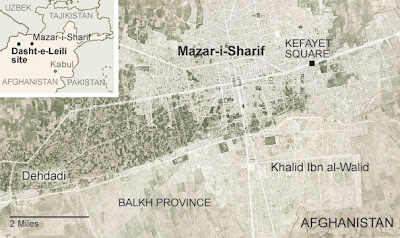

| Visitors Now: | |
| Total Visits: | |
| Total Stories: |

| Story Views | |
| Now: | |
| Last Hour: | |
| Last 24 Hours: | |
| Total: | |
The 800-Page Afghanistan War Report You’ll Probably Never Read

In October of 2010, I wrote about the perils of conflict mapping in Afghanistan. Back then, I was hopeful that the Afghanistan Independent Human Rights Commission’s six-year research and documentation project would initiate a long overdue national discussion about transitional justice. For four years, dozens of Afghan researchers had traversed the country interviewing thousands of witnesses and survivors in isolated villages and big cities, documenting evidence, and identifying 180 mass graves. It was painstaking, emotionally and physically punishing work.
I hoped the AIHRC’s final report, which several of my close friends worked on, would finally force the international community to re-examine its unwritten policy of ignoring the human rights records of its Afghan political and military counterparts. That approach had created an environment in which known human rights abusers were routinely praised and promoted, to the dismay of civil society. It dogged efforts to bolster the legitimacy of the fragile Afghan state and rendered attempts to reform the political system futile. Old powerbrokers entrenched themselves at every level of government and alienated the public by using the vast resources at their disposal to harass their real and imagined enemies. The conflict mapping report couldn’t come soon enough.
Fast forward to the end of last year. The report, rumored to be massive and unsparing, was ready for publication. All too predictably, the Afghan Government blocked its release and refused to re-confirm the sitting commissioners most intimately involved in the conflict mapping project, effectively removing them from the country’s top human rights body. One friend of mine involved in the project received such serious threats at that time that he needed a private security detail to protect his family.
Yesterday, the New York Times published an article about the suppressed conflict mapping report. According to the piece, the report runs 800 pages and the list of 500 individuals it mentions as responsible mass atrocities reads like “a sort of who’s who of power players in Afghanistan: former and current warlords or officials, some now in very prominent positions in the national government, as well as in insurgent factions fighting it.” In other words, the same men who threaten to plunge Afghanistan into deeper, more factional violence after the departure of foreign troops at the end of 2014.
Read more here: http://www.undispatch.com/the-800-page-afghanistan-war-report-youll-probably-never-read-and-why-it-should-be-published


